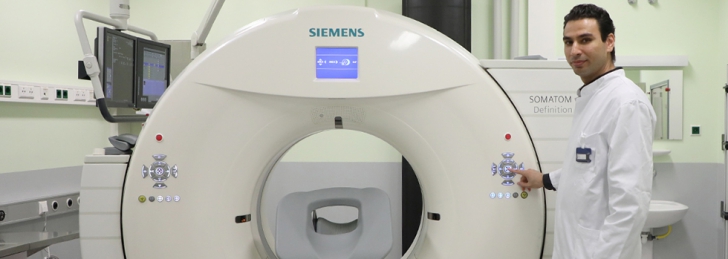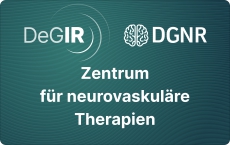Computed Tomography (CT)
The abbreviation CT stands for computed tomography. CT uses X-rays to create high-resolution cross-sectional images of the inside of the body. CT is a fast and established method for examining the entire body. It is also suitable for performing diagnostic and therapeutic punctures with few complications.
Examination procedure
During the examination, you lie on an examination couch in the CT unit. In most examinations, iodine-containing contrast medium is injected through a venous access to better visualize the vessels, the individual organs and tissue structures. The examination takes only a few minutes. Before the examination, you will be informed about the exact procedure and the administration of the contrast medium.
What should be considered?
Current laboratory values of renal function (creatinine i.s. and GFR) and thyroid gland values (TSH, in case of normal deviations also fT3 and fT4) are required to decide whether contrast administration is possible.
Minimally invasive pain therapy of the intervertebral joints (facet joint block) or the nerve root exit points (periradicular therapy - PRT)
You will lie on an examination couch in the CT unit during the examination. A very brief examination is performed using the CT scanner to identify the appropriate site for the puncture. This is then marked on your skin and after detailed disinfection, a local anesthetic is applied with a very thin needle. The needle is then used to puncture the area for administration of an analgesic, including cortisone if necessary. The correct position of the needle is checked with a new CT image and the painkiller is then applied..
In a pre-treatment consultation, you will be informed about the procedure, as well as the possible side effects and contraindications.
What should be considered?
Your blood clotting must be checked before local pain therapy. It may also be necessary to discontinue blood-thinning medication. We will clarify this in advance with your attending physician. Since short-term paralysis may occur after local pain therapy, you must not drive immediately after the treatment. In order to decide whether a contrast medium can be administered, current laboratory values of the kidney function (creatinine i.S. and GFR) and thyroid gland values (TSH, in the case of normal deviations also fT3 and fT4) are required.








